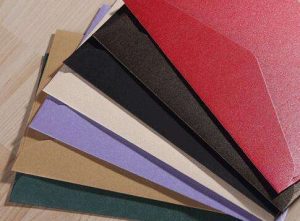Introduction
Special paper is made by using different papers to make paper with special functions. For example, synthetic fiber, synthetic pulp or mixed wood pulp is used separately, and it can be modified or processed with different materials to give paper different functions and uses. For example, for daily use, building materials, electrical products, industrial filters, machinery, agricultural, information, optical, cultural and artistic, biochemical cutting-edge technology, etc., as long as it is used for special purposes. All are collectively referred to as specialty paper.
Specialty paper is a paper with a special purpose and a relatively small output. There are many types of special papers, which are the collective names of various special-purpose papers or art papers. Nowadays, the sellers refer to art papers such as embossed papers as special papers, mainly to simplify the noun confusion caused by the variety.

Packaging special paper
1. Telescopic paper
Japan has successfully developed a kind of stretch paper that uses wood and pulp as raw materials and can be directly pressed into a packaging container without adding any synthetic resin. This paper has a stretchability that is 5 to 10 times larger than that of plain paper. The strength of the paper packaging container is comparable to that of a plastic packaging container, and can be used for packaging daily necessities and foods. The production cost is relatively low, and it can be recycled, and it is expected to replace the plastic packaging container.
2. Paper grain bags
Traditional flour bags are not satisfactory in terms of strength and moisture resistance. The high-weight chicken skin paper currently used for making large-sized bags of flour has been basically tested successfully. The white chicken paper produced by the imported bleached softwood pulp has high whiteness, no fluorescence and strong pulling force, and meets the sanitary requirements. The bottom bag made of the same uses a trapezoidal bonding method, and each layer is independently bonded, and the layers are glued together between the layers to make it more firm. This new paper bag is 1.5 times stronger than a regular paper bag. A bag full of 25-kilogram four-layer paper bag, free fall 15 times at 1.5 meters, still not broken. The paper bag itself is hygroscopic. Under the same conditions, the shelf life of the flour in the paper bag is 2-3 months longer than that in the bag. Another feature is non-toxic, odorless, non-polluting, and in line with food hygiene standards.
3. Special food packaging paper
Edible anticorrosive paper: It is made by first immersing the base paper in an ethanol solution containing 20% succinic acid, 33% sodium succinate and 0.07% sorbic acid, and then drying it. The food containing the marinade is packaged in this paper and can be stored at 38 ° C for 3 weeks without deterioration.
Special coated paper packaging: It has good anti-oil and waterproof effects.

Printing special paper
1.Embossed paper
Most of the embossed paper is pressed from offset paper and whiteboard paper. The surface is rough, textured, expressive and varied. Many art designers prefer to use this type of paper, and use this to make a cover or title page of a book or album to express different personalities.
2. Pattern paper
Designers and printers are constantly looking for ingenious design styles to make their work stand out. Many times, the pattern paper can make them icing on the cake. These high-quality paper products are soft to the touch, beautiful in appearance, and the finished product is more noble and pleasing. There are many varieties of pattern papers, each with its own characteristics, which is higher than ordinary paper.







